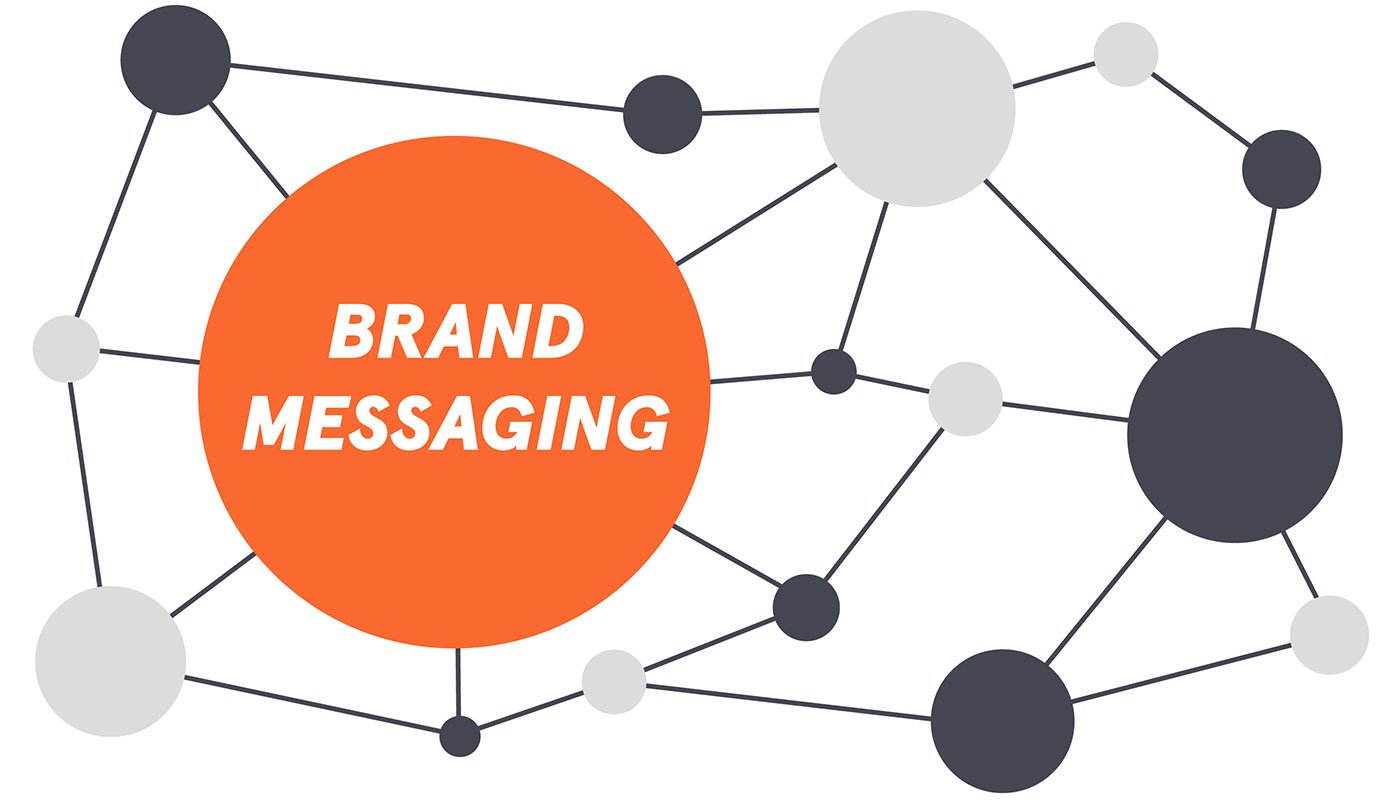Brand Messaging: How to make a brand and why it’s So Important to Get Right

hen Versace comes to your mind, what do you think of? For many, it’s like the positive feelings they have for someone they admire. This correlation between brands and our interpersonal feelings is backed by research from Bergische University.
Table of Contents
ToggleTherefore, correctly connecting with your audience through your brand messaging is crucial for achieving success. Crafting brand messaging begins by establishing a comprehensive identity that reflects your brand’s essence and sets it apart from others in your industry. While this process might take months, if not years, to fully manifest, developing a robust brand messaging framework is a valuable marketing strategy that distinguishes your brand.
In this article we will explore:
What Does Brand Messaging Entail?
Often misconstrued as just a catchy slogan or tagline, brand messaging encompasses far more than that. Josiah Wiles, Vice President of Client Experience at Groww, describes branding as the basis of your business identity, similar to your brand’s personality. Conversely, brand messaging refers to conveying your branding to your audience effectively.
Brand messaging involves crafting a clear, concise, and uniform message that conveys your brand’s unique value proposition to your intended audience. It serves as the base of your brand, comprising of everything from taglines and brand promises to the tone of voice and brand persona. Basically, it represents how a brand communicates with its customers and should maintain consistency across all communications, be it advertisements or social media posts.

Understanding Brand Marketing
While often used interchangeably, brand messaging and brand marketing are distinct concepts. Wiles further clarifies that brand marketing involves leveraging your brand and brand messaging to attract new customers or enhance visibility across various mediums.
Brand marketing employs diverse channels like email marketing, social media advertising, and event marketing to promote your brand, creating awareness and reaching your target demographic. It’s the conduit for conveying your message to your ideal customer, forging deeper connections.
Why Are They Crucial for Your Business?
These branding elements collaborate to construct a potent brand identity that resonates with customers. A robust brand message ensures consistent communication of a brand’s identity across all platforms, aiding customers in comprehending and engaging with the brand
Conversely, brand marketing amplifies this message to a wider audience, fostering brand recognition and trust. Without a clear and consistent brand messaging strategy, a business’s marketing endeavors might falter. Similarly, without effective brand marketing, a business’s message might not reach its intended audience.
Wiles emphasizes the necessity for these components in any successful marketing strategy to craft a compelling narrative addressing how the brand solves customer problems. He underscores that many companies lose sight of this by focusing predominantly on their perceived value, whereas successful companies align branding with their audience’s perspective.
Understanding the Eight Pillars of Brand Messaging
A solid brand marketing strategy depends upon core brand messaging pillars that delineate the brand and articulate a clear message. Adam Draper, Thrive’s Digital Marketing Manager for Strategy, identifies these eight brand messaging pillars
1. Brand Purpose
Your brand purpose or mission statement acts as a guiding principle, influencing all business activities, including marketing strategies, customer service, and employee engagement.
Draper suggests framing your purpose around why your brand exists beyond generating revenue, emphasizing its mission and inherent values.
2. Visual Identity
The visual facets of your brand, encompassing the logo, website design, graphics, illustrations, font style, and color palette, constitute your visual identity.
Draper emphasizes that a consistent visual identity fosters brand recognition and reinforces brand attributes.
3. Unique Value Proposition
This proposition defines your uniqueness compared to competitors. Draper cites examples like Volvo, renowned for safety features, and BMW, known for offering the best driving experience. It underscores the distinct factors that set you apart during the user journey, highlighting unique selling points like product features, quality, or aftercare.
4. Brand Personality
Imagining your brand as a person helps in defining its voice and communication style with customers. Draper emphasizes the importance of a consistent brand personality across all channels, reflecting in the language, content style, and imagery. Crafting voice and tone guidelines involves choosing adjectives that evoke desired emotions in readers.
5. Target Audience
Understanding your target audience facilitates crafting a tailored brand message. Draper stresses creating personas that embody audience demographics, interests, and values.
Employing customer profiles helps in personalizing the brand messaging, fostering a more authentic connection.
6. Brand Messaging
Every reputable company should possess a clear message summarizing its mission and values. These include slogans and taglines used to convey other aspects of the brand messaging framework, such as the value proposition and unique selling points (USPs), according to Draper. Consider iconic brand messaging examples
- Nike’s “Just Do It”
- Coca-Cola’s “Taste The Feeling”
- McDonald’s’ “I’m Lovin’ It”
These examples, while simple, pack a powerful punch, offering a glimpse into a company’s essence in a few words. Crafting an unforgettable tagline that encapsulates your mission and values can significantly enhance brand memorability.
7. Brand Storytelling
An old proverb asserts, “Facts tell, but stories sell.” Storytelling remains a cornerstone in brand marketing strategy, infusing your message with an emotional resonance that prompts customer action. Start by unearthing compelling brand stories—be it a customer success tale or the business’s inception narrative. Integrate these narratives into your messaging, weaving them into your brand’s overall narrative.
8. Brand Organization
Documents to ensure consistent usage of all brand messaging and marketing elements, creating a comprehensive document outlining your branding information is imperative. Draper recommends these documents encompass clear guidelines for each pillar, illustrated examples of their execution, and visual cues.
Brand Messaging Frameworks Worldwide Finding inspiration can be challenging when starting from scratch. Fortunately, several notable brand messaging frameworks serve as examples crafted with care and thoughtfulness.
Brand Messaging Frameworks Worldwide
Finding inspiration can be challenging when starting from scratch. Fortunately, several notable brand messaging frameworks serve as examples crafted with care and thoughtfulness.

Apple
Renowned for its minimalist messaging, Apple’s brand framework focuses on simple language and a user-centric approach. Over the years, they’ve mastered this strategy, emphasizing ease of use and clear communication in their marketing. For instance, their 2023 iPhone campaign, using only two words, “Pro. Beyond.”, conveys power and performance for a premium audience.
Netflix
Aiming to maximize content consumption, Netflix uses clever copy and visuals to captivate its audience. Their original series title, “Stranger Things,” generates intrigue and prompts viewers to delve into the show for answers. Bright colors and engaging fonts across their platform create an immersive experience for viewers.
Dizzy Stop
a health and wellness brand specializing in herbal supplements, prioritizes informed consumer decisions. This approach led to increased sales and engagement, focusing on providing value even when it didn’t mean to sell their products directly.
Ambler Industries
Positioning itself as a community-oriented expert, Ambler Industries increased trust among potential customers by sharing industry-related content and engaging community-centric posts. Partnering with a marketing agency allowed them to focus on service provision, resulting in substantial growth across social media, especially Integra.
Crafting Your Framework Effectively Dispelling
A myth, these brand messaging frameworks mostly follow a similar process in marketing their brands. Let’s delve into the best practices adopted by these examples to construct your own framework.

Step 1: Know Your Audienc
Understanding your target demographic remains pivotal. Apple, for instance, tailored its messaging to the average user, simplifying complex technology to resonate with their audience.
Step 2: Identify Your Core Values and Brand Promise
Netflix, with its brand promise of entertaining the world, continuously diversifies content offerings, aligning with its mission while leading the entertainment industry. Use the previously discussed message pillars as a foundation to articulate your brand’s promise and values.
Step 3: Identify Your Unique Positioning
Everyone aims to break through the noise. Therefore, your messaging frameworks should establish your brand distinctively. Take a cue from Ambler Industries’ success. Instead of emphasizing price or discounts, the company prioritized showcasing its expertise and the trust it fosters. This approach elevated Ambler Industries beyond being just a landscaping company to a respected authority within the community.
Step 4: Determine Your Brand’s Presentation and Voice to Customers
The effectiveness of your brand message pillars lies in how effectively you convey them. Ambler Industries relied on a content-centric approach centered on trust-building, while Netflix focused on visually appealing and inviting content.
Taking the time to outline how you desire customers to perceive and experience your brand involves creating visual elements like logos or slogans and selecting appropriate channels tailored to your message and audience.
Step 5: Test and Enhance Your Messaging Framework
Even if you believe your strategies are brilliant, they don’t have to be immutable right away. Testing diverse brand management strategies and refining your messaging frameworks as you progress is essential.
This involves conducting A/B tests on various advertising campaigns or assessing customer responses to each message disseminated. This iterative process ensures that your messaging framework resonates and effectively engages your audience.
Elevate Your Online Presence with a Premier Brand Marketing Agency
So, what exactly is brand messaging? It’s a fusion of creativity, style, and strategic alignment used to maintain consistency and reliability across all communication channels for your company. While it demands effort to get it spot on, the eventual rewards justify the dedication. Embrace the challenge and craft a messaging strategy that truly stands out!
For a committed partner in branding and marketing, look no further than Groww Internet Marketing Agency. Our brand marketing services adhere to your values, catering to both emerging businesses and established brands. Take the leap to elevate your status within your niche.
Reach out to us today to embark on this journey!
- Share
